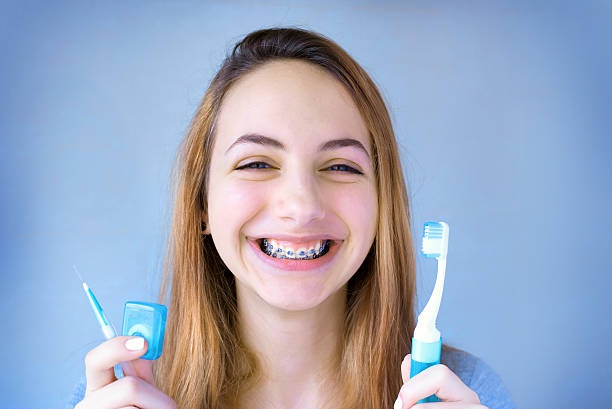Introduction
A radiant smile is often considered one of the most appealing features a person can possess. However, achieving that perfect smile sometimes requires a little assistance, and this is where dental braces come into play. Dental braces have been a trusted tool in orthodontics for decades, offering a transformative journey that goes beyond just straightening teeth. In this essay, we will explore the various aspects of Ashford dental braces, including their history, types, benefits, and the impact they have on individuals’ lives.
The Evolution of Dental Braces
The history of dental braces dates back thousands of years. The earliest evidence of orthodontic treatment can be traced to the ancient Egyptians, who used metal bands and catgut (a type of cord) to close gaps in teeth. In more recent times, the concept of braces as we know them today began to take shape in the 18th century. French dentist Pierre Fauchard is often credited with developing the first modern braces in the 18th century. His design involved a flat metal band that was connected to the teeth by thread.
Since then, dental braces have come a long way in terms of design and functionality. The introduction of stainless steel in the early 20th century revolutionized orthodontics, making braces more durable and effective. Modern braces are now more comfortable and less conspicuous than their predecessors, thanks to advancements in materials and technology.
Types of Dental Braces
There are various types of dental braces available today, each catering to different needs and preferences. Some of the most common types include:
Traditional Metal Braces: These are the most recognizable type of braces, consisting of metal brackets and wires. While they are highly effective, some individuals may find them less aesthetically pleasing due to their visibility.
Ceramic Braces: Ceramic braces are similar to traditional metal braces but use tooth-colored or clear brackets, making them less conspicuous. They are a popular choice for those who want a more discreet treatment option.
Lingual Braces: Lingual braces are placed on the backside of the teeth, making them virtually invisible from the front. They are an excellent choice for individuals who wish to keep their treatment discreet.
Invisalign: Invisalign is a revolutionary system that uses clear, removable aligners to straighten teeth. It offers greater comfort and flexibility compared to traditional braces.
The Benefits of Dental Braces
Beyond their cosmetic benefits, dental braces offer a wide range of advantages that impact both oral health and overall well-being. Here are some key benefits:
Improved Oral Health: Straight teeth are easier to clean and maintain, reducing the risk of gum disease, cavities, and other dental issues. Proper alignment can also alleviate issues like TMJ disorders.
Enhanced Confidence: Dental braces can significantly boost self-esteem and confidence by providing individuals with a beautiful, straight smile. This newfound confidence often extends to various aspects of life, including social interactions and professional opportunities.
Speech Improvement: Misaligned teeth can affect speech clarity. Braces can help correct these issues, leading to improved communication skills.
Better Digestion: Properly aligned teeth aid in the chewing and digestion process, as they help break down food more efficiently.

The Emotional Journey of Braces
While the physical benefits of dental braces are well-documented, it’s essential to recognize the emotional journey that individuals undergo during orthodontic treatment. For many, the decision to get braces is not just about straightening teeth; it’s about embarking on a transformational journey of self-improvement and self-acceptance.
Initially, individuals may feel self-conscious about their braces, particularly if they have opted for traditional metal braces. However, as the treatment progresses, so does their confidence. Each adjustment brings them one step closer to their ideal smile, reinforcing their commitment to the process.
Moreover, the support and guidance provided by orthodontic professionals play a crucial role in this emotional journey. Orthodontists not only monitor the progress of the treatment but also offer emotional support and encouragement, helping patients navigate any challenges they may face.
Impact on Quality of Life
The impact of dental braces on an individual’s quality of life extends beyond the physical and emotional aspects. A straight and healthy smile can have far-reaching effects on various facets of life, including:
Social Life: With increased self-confidence, individuals are more likely to engage in social activities, make new friends, and build stronger relationships.
Academic and Professional Success: Confidence and self-assuredness can positively influence academic and career achievements. A confident smile can leave a lasting impression in job interviews and other professional interactions.
Long-Term Health: Properly aligned teeth are easier to maintain and less prone to dental issues. This can result in cost savings on dental treatments in the long run.
Conclusion
Dental braces have come a long way since their inception, offering individuals a transformative journey that extends beyond straightening teeth. From their humble beginnings in ancient civilizations to the modern, technologically advanced options available today, braces have continually evolved to meet the needs and preferences of patients.
The benefits of dental braces are not limited to cosmetic improvements; they encompass improved oral health, enhanced confidence, better speech, and even improved digestion. Moreover, the emotional journey of undergoing orthodontic treatment should not be underestimated, as it plays a significant role in an individual’s overall well-being.
In conclusion, dental braces are more than just a means to achieve a beautiful smile; they are a pathway to a better, healthier, and more confident life. They exemplify the power of modern orthodontics to transform not only smiles but also the lives of those who choose to embark on this remarkable journey.

